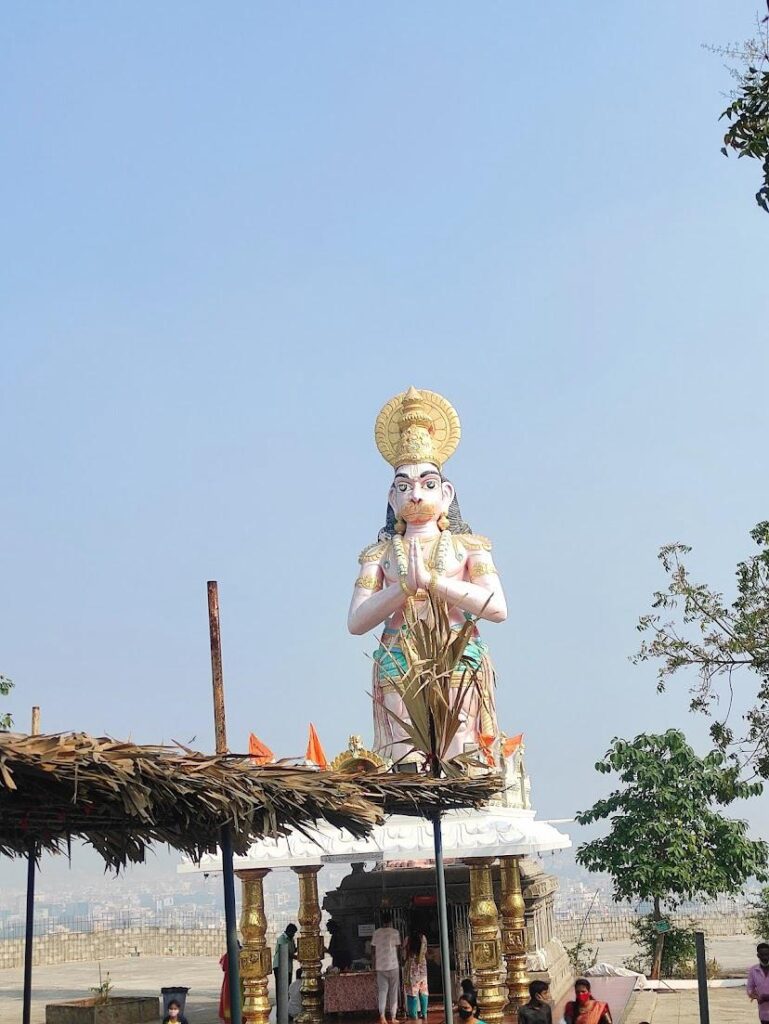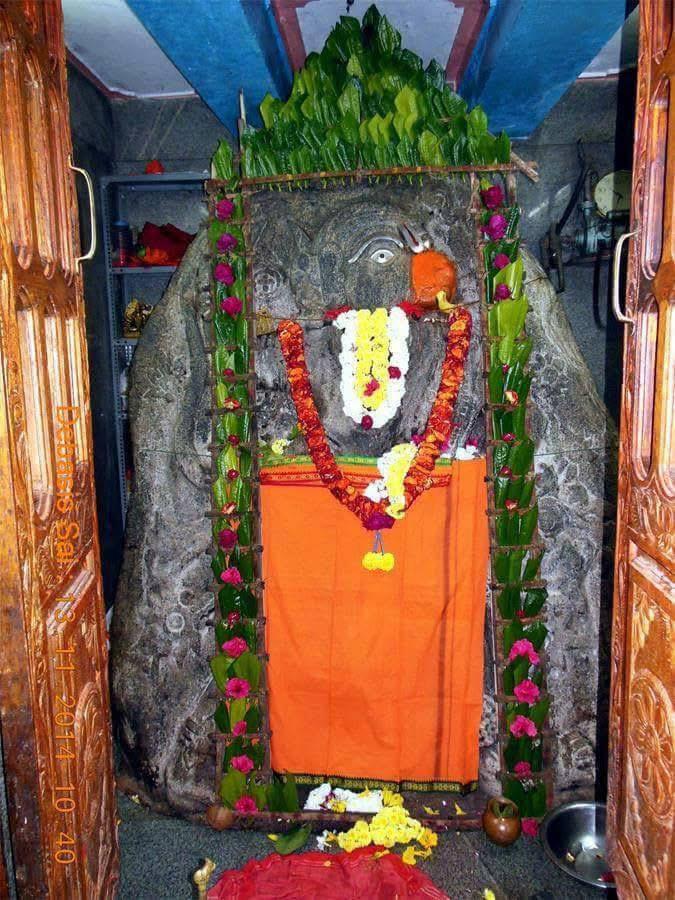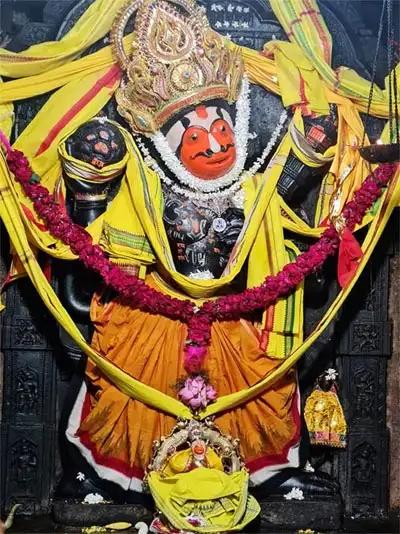The Enduring Legacy of Anjaneya: Unpacking the Significance of Hanuman Worship in Andhra Pradesh
By Lokanath Mishra:
In the vibrant state of Andhra Pradesh, a revered deity has been worshipped for centuries, inspiring devotion, strength, and courage in the hearts of millions. Anjaneya, also known as Hanuman, is a beloved figure in Hindu mythology, and his worship has become an integral part of Andhra Pradesh’s rich cultural heritage.

The Legend of Anjaneya
Anjaneya, the monkey god, is revered for his unwavering devotion to Lord Rama, his unshakeable courage, and his extraordinary strength. According to Hindu mythology, Anjaneya was born to Anjana, a monkey princess, and Vayu, the wind god. His birth is celebrated as a symbol of divine intervention, and his life is a testament to the power of devotion, loyalty, and selfless service.
The Significance of Anjaneya Worship in Andhra Pradesh
In Andhra Pradesh, Anjaneya is worshipped in various forms, from majestic temples to humble shrines. Devotees throng to these sacred sites, offering prayers, flowers, and fruits to their beloved deity. The worship of Anjaneya is deeply ingrained in the state’s culture, with many families passing down stories, traditions, and rituals from generation to generation.

The Iconic Temples of Anjaneya
Andhra Pradesh is home to numerous iconic temples dedicated to Anjaneya, each with its unique history, architecture, and spiritual significance. Some of the most revered temples include the Anjaneya Swamy Temple in Tirupati, the Hanuman Temple in Vijayawada, and the Anjaneya Temple in Kurnool. These temples attract millions of devotees every year, who come to seek the blessings of their beloved deity.
The Cultural Significance of Anjaneya Worship
The worship of Anjaneya is not just a religious practice; it is an integral part of Andhra Pradesh’s cultural identity. Anjaneya’s legend has inspired countless literary works, art forms, and cultural traditions. The state’s folk songs, dances, and festivals often revolve around the themes of Anjaneya’s bravery, devotion, and selfless service.
Conclusion
The worship of Anjaneya, Hanuman, is an enduring legacy that continues to inspire and uplift the people of Andhra Pradesh. This beloved deity has become an integral part of the state’s cultural heritage, symbolizing the values of devotion, courage, and selfless service. As we celebrate the glory of Anjaneya, we are reminded of the transformative power of faith, culture, and tradition.
The Majestic Anjaneya Temples of Vijayawada, Guntur, and Puttaparthi: A Spiritual Odyssey
In the heart of Andhra Pradesh, three magnificent Anjaneya temples stand tall, drawing devotees from far and wide. Located in Vijayawada, Guntur, and Puttaparthi, these temples are renowned for their stunning architecture, rich history, and spiritual significance.
Vijayawada: The Hanuman Temple on Indrakeeladri Hill
Perched atop the picturesque Indrakeeladri Hill, the Hanuman Temple in Vijayawada is a breathtaking sight. This ancient temple, dating back to the 17th century, is dedicated to Lord Anjaneya, who is revered as the protector of the city. The temple’s stunning architecture, with its intricate carvings and vibrant frescoes, is a testament to the region’s rich cultural heritage.
Guntur: The Anjaneya Swamy Temple in Pedakakani
In the bustling town of Pedakakani, Guntur, lies the revered Anjaneya Swamy Temple. This magnificent temple, built in the 18th century, is famous for its 30-foot-tall Anjaneya idol, which is one of the tallest in the region. The temple’s serene atmosphere, coupled with its stunning architecture, makes it a must-visit destination for devotees and tourists alike.
Puttaparthi: The Anjaneya Swamy Temple in Prasanthi Nilayam
In the spiritual haven of Puttaparthi, the Anjaneya Swamy Temple stands as a testament to the enduring legacy of Bhagawan Sri Sathya Sai Baba. This beautiful temple, built in the 1950s, is dedicated to Lord Anjaneya, who is revered as the embodiment of devotion and selfless service. The temple’s stunning architecture, with its intricate carvings and vibrant frescoes, is a reflection of the region’s rich cultural heritage.

A Spiritual Connection
These three Anjaneya temples, located in Vijayawada, Guntur, and Puttaparthi, are more than just architectural marvels – they are spiritual havens that connect devotees with the divine. As one steps into these temples, they are enveloped in an aura of peace, tranquility, and devotion, reminding them of the transformative power of faith and spirituality.
In conclusion, the Anjaneya temples of Vijayawada, Guntur, and Puttaparthi are a testament to the enduring legacy of Lord Anjaneya, who continues to inspire devotion, courage, and selfless service in the hearts of millions. These magnificent temples are a must-visit destination for anyone seeking a deeper connection with the divine and a glimpse into the rich cultural heritage of Andhra Pradesh.
A Comprehensive Analysis of the Shri Anjaneya Temples of Puttaparthi, Paritala, and Ponnuru
In the heart of Andhra Pradesh, three magnificent Shri Anjaneya temples stand tall, drawing devotees from far and wide. Located in Puttaparthi, Paritala, and Ponnuru, these temples are renowned for their stunning architecture, rich history, and spiritual significance. In this analysis, we will delve into the unique features, legends, and cultural importance of each temple, highlighting their similarities and differences.
Puttaparthi: The Anjaneya Swamy Temple in Prasanthi Nilayam
Located in the spiritual haven of Puttaparthi, the Anjaneya Swamy Temple is a beautiful structure that stands as a testament to the enduring legacy of Bhagawan Sri Sathya Sai Baba. This temple, built in the 1950s, is dedicated to Lord Anjaneya, who is revered as the embodiment of devotion and selfless service.
- Architecture: The temple’s stunning architecture, with its intricate carvings and vibrant frescoes, is a reflection of the region’s rich cultural heritage.
- Legend: According to legend, Bhagawan Sri Sathya Sai Baba himself installed the idol of Lord Anjaneya in the temple, imbuing it with his divine energy.
- Cultural Significance: The temple is a significant cultural landmark in Puttaparthi, attracting devotees and tourists from all over the world.
Paritala: The Anjaneya Swamy Temple
Located in the picturesque town of Paritala, the Anjaneya Swamy Temple is a magnificent structure that stands on the banks of the Krishna River. This ancient temple, dating back to the 15th century, is dedicated to Lord Anjaneya, who is revered as the protector of the region.
- Architecture: The temple’s stunning architecture, with its intricate carvings and vibrant frescoes, is a testament to the region’s rich cultural heritage.
- Legend: According to legend, the temple was built by the Vijayanagara kings, who were devotees of Lord Anjaneya.
- Cultural Significance: The temple is a significant cultural landmark in Paritala, attracting devotees and tourists from all over the region.
Ponnuru: The Anjaneya Swamy Temple
Located in the historic town of Ponnuru, the Anjaneya Swamy Temple is a beautiful structure that stands as a testament to the enduring legacy of Lord Anjaneya. This ancient temple, dating back to the 16th century, is dedicated to Lord Anjaneya, who is revered as the embodiment of devotion and selfless service.
- Architecture: The temple’s stunning architecture, with its intricate carvings and vibrant frescoes, is a reflection of the region’s rich cultural heritage.
- Legend: According to legend, the temple was built by the local rulers, who were devotees of Lord Anjaneya.
- Cultural Significance: The temple is a significant cultural landmark in Ponnuru, attracting devotees and tourists from all over the region.
Comparison and Conclusion
While each temple has its unique features, legends, and cultural significance, they share a common thread – the reverence for Lord Anjaneya. The temples of Puttaparthi, Paritala, and Ponnuru are not just architectural marvels but also spiritual havens that connect devotees with the divine.

In conclusion, the Shri Anjaneya temples of Puttaparthi, Paritala, and Ponnuru are a testament to the enduring legacy of Lord Anjaneya, who continues to inspire devotion, courage, and selfless service in the hearts of millions. These magnificent temples are a must-visit destination for anyone seeking a deeper connection with the divine and a glimpse into the rich cultural heritage of Andhra Pradesh.
A Comparative Analysis of Hanuman Puja in Odisha and Andhra Pradesh
Hanuman Puja, a revered ritual dedicated to the worship of Lord Hanuman, is an integral part of the cultural and spiritual landscape of both Odisha and Andhra Pradesh. While the underlying essence of the puja remains the same, there are distinct differences in the way it is observed and celebrated in these two states.
Similarities
- Reverence for Lord Hanuman: In both Odisha and Andhra Pradesh, Lord Hanuman is revered as a symbol of strength, courage, and devotion.
- Puja Rituals: The puja rituals, including the offering of flowers, fruits, and prasad, are similar in both states.
- Importance of Saturday Worship: In both Odisha and Andhra Pradesh, Saturday is considered an auspicious day for Hanuman Puja, and devotees throng temples and offer special prayers.
Differences
- Deity Worship: In Odisha, Lord Hanuman is often worshipped as a subsidiary deity in Jagannath temples, while in Andhra Pradesh, he is worshipped as a primary deity in many temples.
- Puja Style: The puja style in Odisha is influenced by the Jagannath cult, with an emphasis on the worship of Lord Hanuman as a loyal servant of Lord Jagannath. In Andhra Pradesh, the puja style is more diverse, with different regions having their unique traditions and customs.
- Festivals and Celebrations: While both states celebrate Hanuman Jayanti, the birthday of Lord Hanuman, Andhra Pradesh also observes Hanuman Vratham, a special festival dedicated to the worship of Lord Hanuman.
- Temple Architecture: The temple architecture in Odisha is characterized by the Kalinga style, with intricate carvings and sculptures, while in Andhra Pradesh, the temple architecture is more diverse, with different regions having their unique styles.
Conclusion
In conclusion, while there are similarities in the way Hanuman Puja is observed in Odisha and Andhra Pradesh, there are also distinct differences that reflect the unique cultural and spiritual traditions of each state. The reverence for Lord Hanuman, however, remains a common thread that binds the people of both states together.
The Gajapati’s Legacy: Hanuman Temples in Andhra Pradesh
The Gajapati rulers, who were known for their patronage of Hinduism and temple construction, built several Hanuman temples in Andhra Pradesh (AP). One notable example is the Hanuman Temple in Simhachalam, Visakhapatnam, AP.
The Simhachalam Hanuman Temple
The Hanuman Temple in Simhachalam is located near the famous Varaha Lakshmi Narasimha Temple, which was also built by the Gajapati rulers. The Hanuman Temple is believed to have been constructed during the 15th century, during the reign of the Gajapati king, Purushottama Deva.
Architectural Significance
The Simhachalam Hanuman Temple is an excellent example of the Gajapati’s architectural style, which blended elements of Odishan, Telugu, and Vijayanagara styles. The temple’s exterior walls feature intricate carvings and sculptures, depicting scenes from the Ramayana and other Hindu epics.
Cultural Significance
The Hanuman Temple in Simhachalam is an important cultural landmark in AP, attracting devotees and tourists from all over the world. The temple is particularly famous for its annual Hanuman Jayanti celebrations, which feature traditional music, dance, and cultural programs.
Other Hanuman Temples Built by the Gajapati
In addition to the Simhachalam Hanuman Temple, the Gajapati rulers built several other Hanuman temples in AP, including:
- Hanuman Temple in Vijayawada: This temple is located in the heart of Vijayawada city and is believed to have been built during the 16th century.
- Hanuman Temple in Rajahmundry: This temple is located on the banks of the Godavari River and is believed to have been built during the 15th century.
In conclusion, the Gajapati rulers played a significant role in promoting Hinduism and temple construction in AP, including the construction of several Hanuman temples. These temples stand as testaments to the Gajapati’s architectural and cultural achievements, and continue to inspire devotion and cultural pride in the people of AP.

